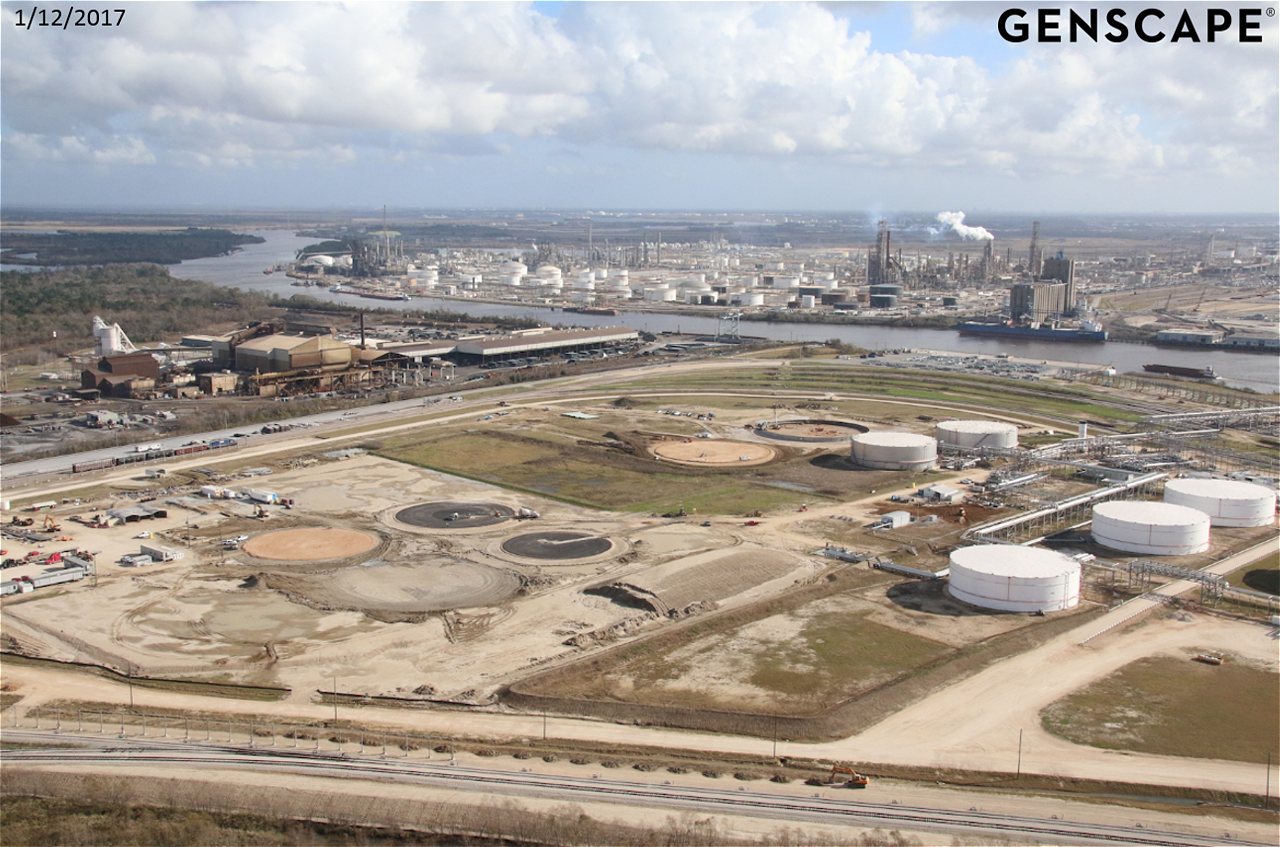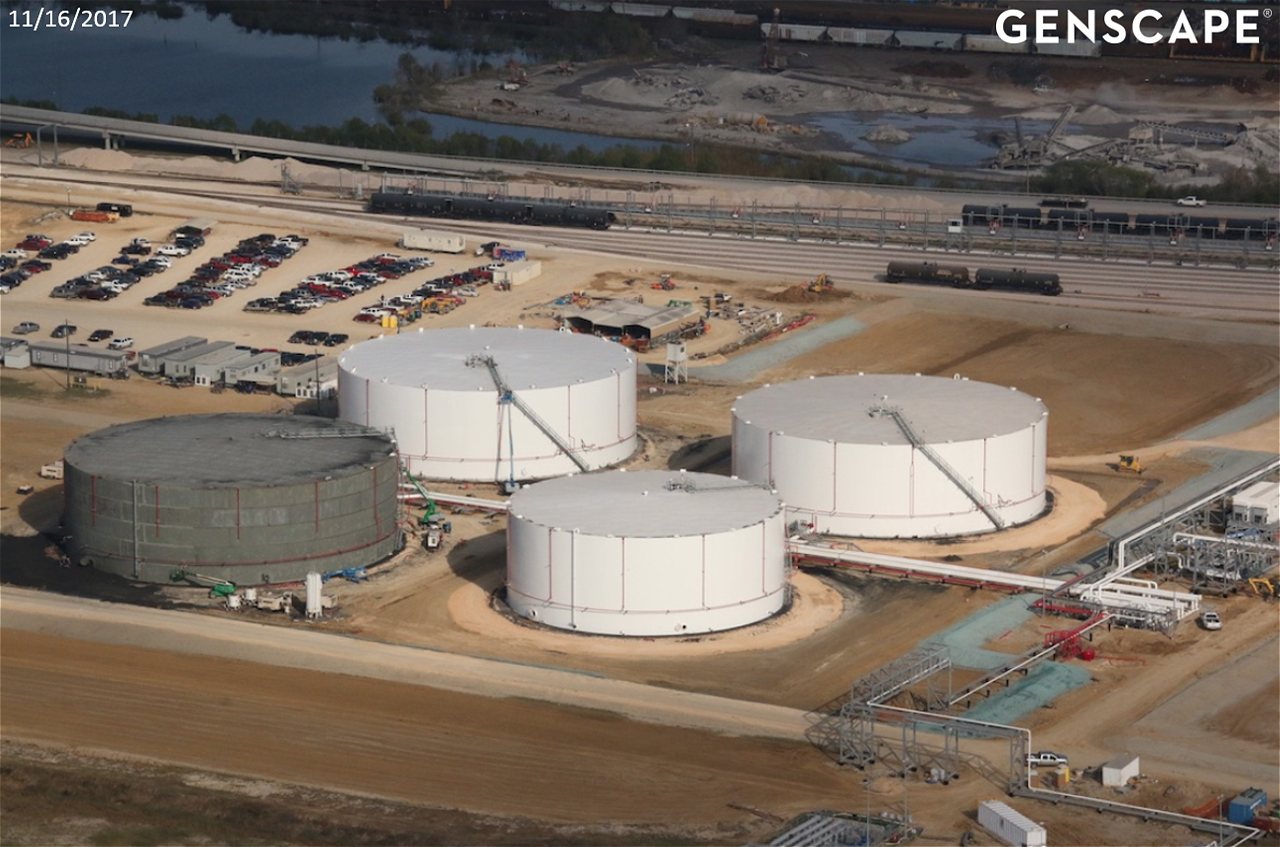




Jim Venhoff, Ag & Biofuels, Manager
The
Jefferson Energy Terminal has hit the ground running since completing
four large storage tanks in late 2017, capable of handling a total
550,000 barrels (bbls) of ethanol. The tanker “Bow Kiso”
(IMO: 9379894) received the first ethanol that came from the terminal
on November 30, 2017. Since the inaugural shipment, at least six
additional vessels have been identified through Genscape’s Ethanol Export Monitor as carrying ethanol from this terminal.
Situated on the east bank of the Neches River Ship Channel at the
Port of Beaumont in Texas, Jefferson Energy Terminal is close to
multiple large refineries in the Port Arthur area such as Saudi Aramco’s
Port Arthur Refinery and Exxon Mobil’s Beaumont Refinery. The port is
the fourth largest in the U.S., and hosts cargos that make their way
from the Gulf of Mexico or the Intracoastal Waterway each day. The
terminal became operational in 2013 and has since raised its crude
storage capacity to over 700,000 bbls.
In June 2016, Jefferson Energy and Green Plains Inc. began a joint
venture, JGP Energy Partners, which would bring ethanol to the terminal.
Its phase 1 goal was to become a distribution hub for the import and
export for multiple grades of ethanol. Currently, 550,000 bbls of
ethanol storage is active with the option to expand this capacity to
850,000 bbls. Nearly 450,000 bbls of working capacity is intended to be
used for export while the remaining 100,000 bbls of working capacity
will be used as domestic ethanol. However, the terminal has the
capability to use all 550,000 bbls of working capacity for exports.
The terminal is able to handle two ethanol unit trains and is
connected directly to Class I railroads, providing unit trains direct
access without connecting to a short-line. This avenue opens doors to
most ethanol plants in North America, including Green Plains who
operates 17 ethanol plants with a total capacity of approximately 1.5
billion gallons (gals).
Construction of the ethanol tanks began around January 2017.
Completion was originally planned for the second to third quarter of
2017, but construction was delayed in August due to Hurricane Harvey.
Genscape first recorded storage in November 2017 during a flyover of the
terminal. Genscape has been collecting aerial imagery since July 2014.
The completion of Jefferson Energy Terminal’s ethanol storage tanks
brings a significant amount of additional ethanol to the PADD 3 region.
In comparison to EIA’s working storage capacity for fuel ethanol,
Jefferson Energy Terminals adds roughly 8.4 percent of fuel ethanol for
PADD 3. Genscape estimates a total working capacity of over 144 million
gals of fuel ethanol used for export. The addition of Jefferon Energy
Terminal adds approximately 16 percent of additional export capacity.
This is the largest addition of fuel ethanol capacity to the region
since Texas International Terminals added 28.7 million gals of capacity
beginning in April 2017.
As reported by Genscape’s Ethanol Export Monitor,
the first recorded shipment out of Jefferson Energy Terminal was the
Bow Kiso which received approximately 3 million gals between November 30
and December 2. Additionally, the vessel also received an approximate 1
million gals from Oiltanking-Texas City before heading to Brazil. The
next two shipments in December were considerably larger. The “Stolt Gulf Mirdif” (IMO: 9359399) and “Pigeon Point” (IMO: 9322396) each are believed to have received over 10 million gals with destinations of India and Brazil, respectively.

In January, the terminal has continued to stay active with multiple
vessels believed to be carrying ethanol. As of January 30, at least four
vessel have been identified as receiving ethanol from the facility this
month. End destinations have not been finalized for all vessels, but
early indications show Brazil and India as high probabilities.
To receive the latest information on U.S. ethanol exports from the
Gulf Coast, including daily storage measurements of terminals known to
export ethanol, ethanol volumes loaded to vessels, and up-to-date vessel
destinations, please click here to request a trial of Genscape’s Ethanol Exports Monitor.
No comments:
Post a Comment